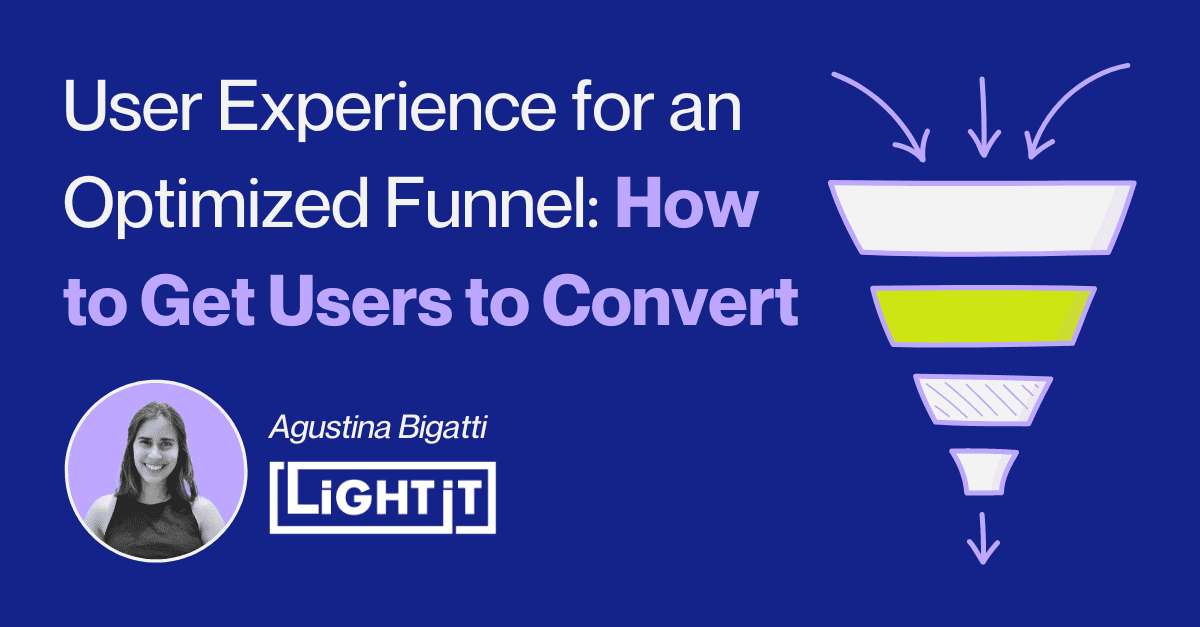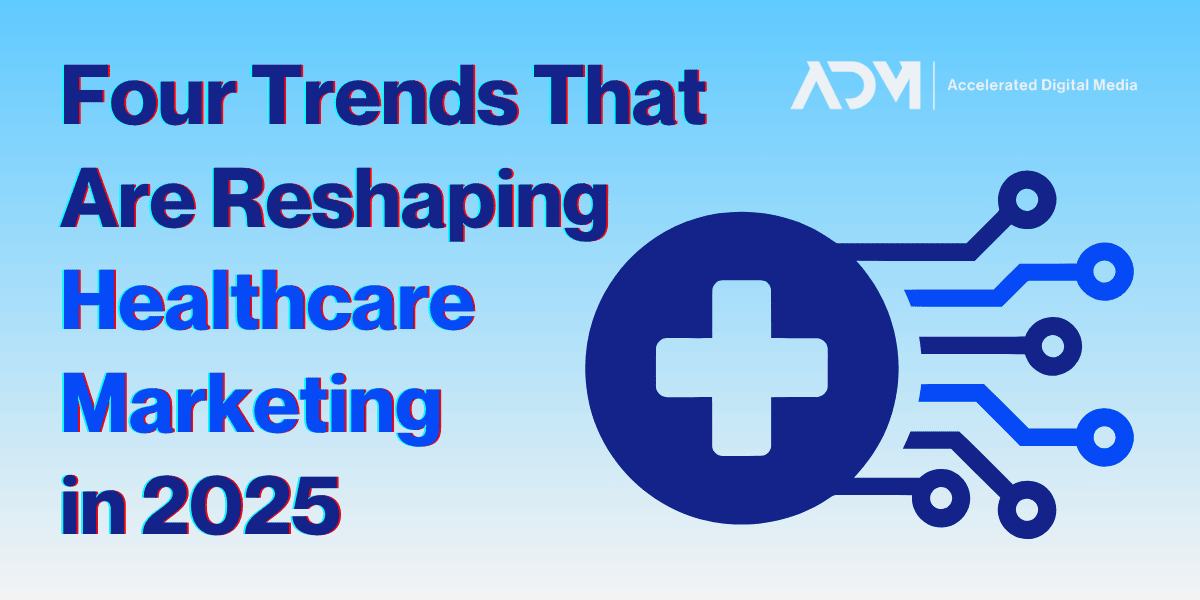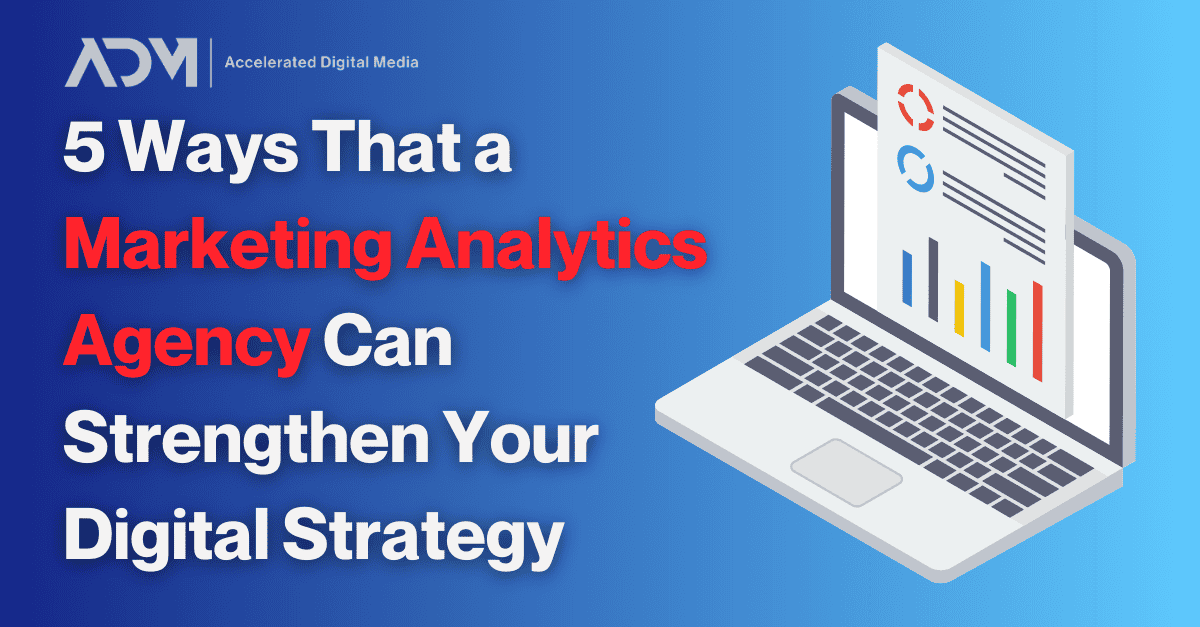Agustina Bigatti is Head of Partnerships and Business Development at Light-it, where she helps digital health companies innovate and build the future of healthcare.
Big data’s impact in every field
Crafting an exceptional user experience is crucial in achieving high conversion rates. This blog post will delve into the complexities of building an optimized funnel, meticulously designed not only to attract users but to guide them through each stage seamlessly, conversion included. From the initial point of entry to the culmination of a transaction, understanding user experience is key to unlocking the full potential of your online presence. Join us on this journey as we display strategies and insights that empower you to transform casual visitors into leads.
The Importance of a Data-driven Approach
We hold a wealth of data, and it’s now within reach for every marketer. The challenge is to take advantage of it by finding insights and optimizing experiences to boost marketing performance.
A data-driven approach in marketing is crucial as it allows businesses to make informed decisions based on actionable insights derived from consumer behavior and preferences. This method enhances targeting precision, optimizes resource allocation, and ultimately improves the overall effectiveness of marketing strategies. Leveraging data-driven insights can revolutionize patient engagement, personalize healthcare experiences, and contribute to better overall health outcomes.
Let’s narrow down the focus to examples of a data-driven approach in marketing within the healthcare industry:
- Precise Healthcare Campaigns: By leveraging population data, healthcare marketers can create targeted marketing campaigns, provided they avoid the collection or sharing of protected health information.
- Behavior-Triggered Communications: Implementing marketing automation based on user interactions is also an effective action. For instance, sending follow-up emails with additional information to individuals who have recently engaged with a healthcare provider’s website or attended a webinar on a specific health topic.
- Online Advertising for Specialized Services: Targeting online advertising campaigns to specific demographics based on interests and online behavior can also boost conversions. For instance, promoting a new cardiac care center by contextually placing ads alongside content related to heart health.
- Data-Driven Social Media Campaigns: You should also analyze social media data to understand healthcare trends and general public preferences. Social Media and social listening techniques are great thermometers to understand what is being talked about. Healthcare marketers can create content that resonates with the target audience, leading to more effective social media campaigns and community engagement.
- Feedback Analysis for Service Improvement: This consists of gathering and analyzing patient feedback to improve marketing strategies. Understanding users’ sentiments and preferences helps refine messaging and promotional efforts, ensuring they align with the expectations and needs of the target audience.
So, taking all of these examples into account, we can see that a data-driven approach in healthcare marketing enables more targeted and personalized communication, improves potential customers and patient engagement, increases awareness of healthcare services, and ultimately improves overall marketing effectiveness.
How UX Can Impact Conversion Rate
Your data-driven marketing strategies won’t go very far, however, if users aren’t landing on pages that are optimized to help convert them into patients. User Experience (UX) can have a profound impact on Conversion Rate (CR), and it plays a pivotal role in determining the success of any online platform. UX encompasses users’ overall interaction with a website or application and how that influences their satisfaction, ability to navigate, and likelihood of completing desired actions.
A seamless and intuitive UX design can significantly enhance the user journey, reducing friction and encouraging users to engage more deeply. If you are not yet familiar with this topic, don’t hesitate to reach out so you can get advice from our UX/UI design experts at Light-it. From streamlined navigation to visually appealing interfaces, a positive UX provides confidence, builds trust, and ultimately increases the likelihood of users converting.
By understanding user needs, preferences, and pain points, businesses can optimize their digital experiences to not only attract but retain users, translating into improved conversion rates and overall success in their online channels strategy.
4 Steps to Make It Happen
So, let’s dive into four practical steps to get your users to convert.
1. User Journey Analysis:
Begin by thoroughly analyzing the user journey. Understand the steps users take from the moment they land on your site or platform to the point of conversion. Identify potential roadblocks or points of friction in the journey. This analysis will provide insights into user behavior, allowing you to optimize the funnel for a smoother and more intuitive experience.
- Practical Tip: Use Google Analytics (web analytics service) and tools like Hotjar (includes heatmaps, recordings, and surveys) to track user behavior, identifying common paths and potential bottlenecks in the journey.
- Actionable Insight: Leverage the data gathered to optimize the user flow, ensuring a seamless experience from landing to conversion.
2. Quality Assurance, Responsive Design, and Accessibility:
Ensure the overall quality of your website or application through rigorous quality assurance processes. You can implement responsive design to guarantee a seamless experience across various devices and screen sizes. Simultaneously, prioritize accessibility to make your platform inclusive for users with different abilities. A user-friendly, accessible, and responsive design contributes significantly to a positive user experience, increasing the likelihood of conversions.
- Practical Tip: Utilize tools like Mobile Simulator to test your website across various devices to ensure responsiveness. WAVE Web Accessibility Evaluation Tool generates a detailed report highlighting accessibility issues, such as missing alternative text, color contrast problems, and structural elements.
- Actionable Insight: Implement accessible design principles, catering to users with disabilities and improving overall usability. You can dive deep into healthcare accessibility in this article!
3. A/B Testing for Optimization:
A/B testing consists of experimenting with different variations of key elements of a site, such as call-to-action buttons, page layouts, or content. By comparing the performance of these variations, you can identify which elements resonate better with your audience and drive higher conversion rates. A/B testing is an iterative process that allows you to fine-tune your funnel based on real user data.
- Practical Tip: Conduct A/B tests using tools like Optimizely to compare different design elements, copy, or CTAs.
- Actionable Insight: Analyze A/B test results to identify high-performing variations and implement changes accordingly.
4. Personalization Strategies:
Implement personalized experiences to cater to your users’ individual needs and preferences. Leverage data insights to deliver tailored content, recommendations, or offers. Whether through personalized product suggestions or dynamic content based on user behavior, personalization enhances user engagement and fosters a sense of connection. A more personalized approach increases user engagement and the chances of them finding value in your offerings, ultimately leading to higher conversion rates.
- Practical Tip: Implement personalization tools like Dynamic Yield to tailor content and offers based on user preferences.
- Actionable Insight: Leverage data on user preferences and behavior to create personalized experiences, increasing engagement.
By integrating these steps into your digital strategy, you can create a user-centric approach that not only enhances UX but also boosts conversion rates. ADM’s expertise in performance marketing emphasizes the importance of these practices, ensuring clients achieve optimal results in their online endeavors.
Final Insights
Taking advantage of the resources and changing the traditional mindset to a more analytical approach
In conclusion, it’s evident that hacking the full potential of online conversions requires a departure from traditional mindsets. Embracing a more analytical approach, empowered by the capital of available resources and data, is the key to success in today’s digital world. Merging user-centric design, data-driven insights, and strategic optimization not only refines the user journey but also opens doors to unprecedented conversion opportunities.
We must leverage the tools at our disposal and redefine how we approach user experience to transform casual visitors into dedicated converts. Remember, in the age of analytics, the journey to conversion is as much an art as it is a science.
Interested in getting more familiar with this topic? Don’t hesitate to reach out so you can get advice from our UX/UI design experts at Light-it.




